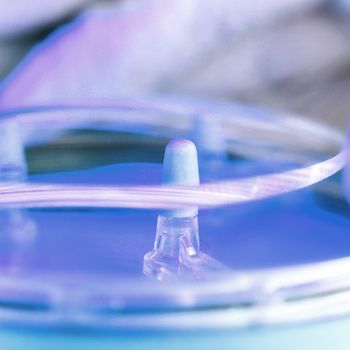
The demands placed on the performance of optical components have skyrocketed and, in response, highly complex coating systems have been developed to produce surfaces that are scratch-resistant, dirt-repellent, anti-static and reflective. Various curing processes are integral to the production of optical coatings, making it difficult but important to find the decisive balance between coating hardness and elasticity.
Quality control therefore requires correspondingly powerful measurement methods and systems. For the standard-compliant determination of such material parameters as hardness and elastic modulus the instrumented indentation test can be used, even thin coatings of less than 100 nanometres in thickness can be measured accurately.
With the load/indentation depth method according to DIN EN ISO 14577 and ASTM E 2546, the indenter, typically a Vickers or Berkovich pyramid is pressed with continuously increasing test load into the material and then reduced in the same manner while simultaneously measuring the respective indentation depths. Important technological characteristics can be calculated from the resultant load/unload cycle, for example the Martens hardness. The elastic modulus of indentation can be determined when the test load is reduced.
The figure 1 presents the measurement of Martens hardness and the associated standard deviation on two plastic lenses, samples courtesy of Rodenstock GmbH, Munich. The samples were produced under the same process conditions but exhibit differences in the composition of the coating system. As result a significant change of the hardness from one coating to the other can be seen.
At a certain indentation depth, the substrate material starts to become detectible. In order to avoid that influence while measuring the coating, the indentation depth must be limited to no more than 1/10 of the coating thickness (Bückle's Rule). The coefficients of variation for the two samples, 1.73 and 1.60 percent, respectively, as achieved using the FISCHER PICODENTOR HM500, demonstrates the potential for accuracy.
Although only the Martens hardness can be measured depth-dependent using standard methods, additional mechanical properties such as the Vickers hardness or the elastic modulus of indentation can be determined via the ESP (Enhanced Stiffness Procedure) method, which employs partial loading and unloading.
Conclusion: If the right balance between coating hardness and elasticity for coatings on optical components has to be determined the FISCHER PICODENTOR® HM500 is the suitable instrument to evaluate these parameters. For further consultancy please contact your local FISCHER representative.